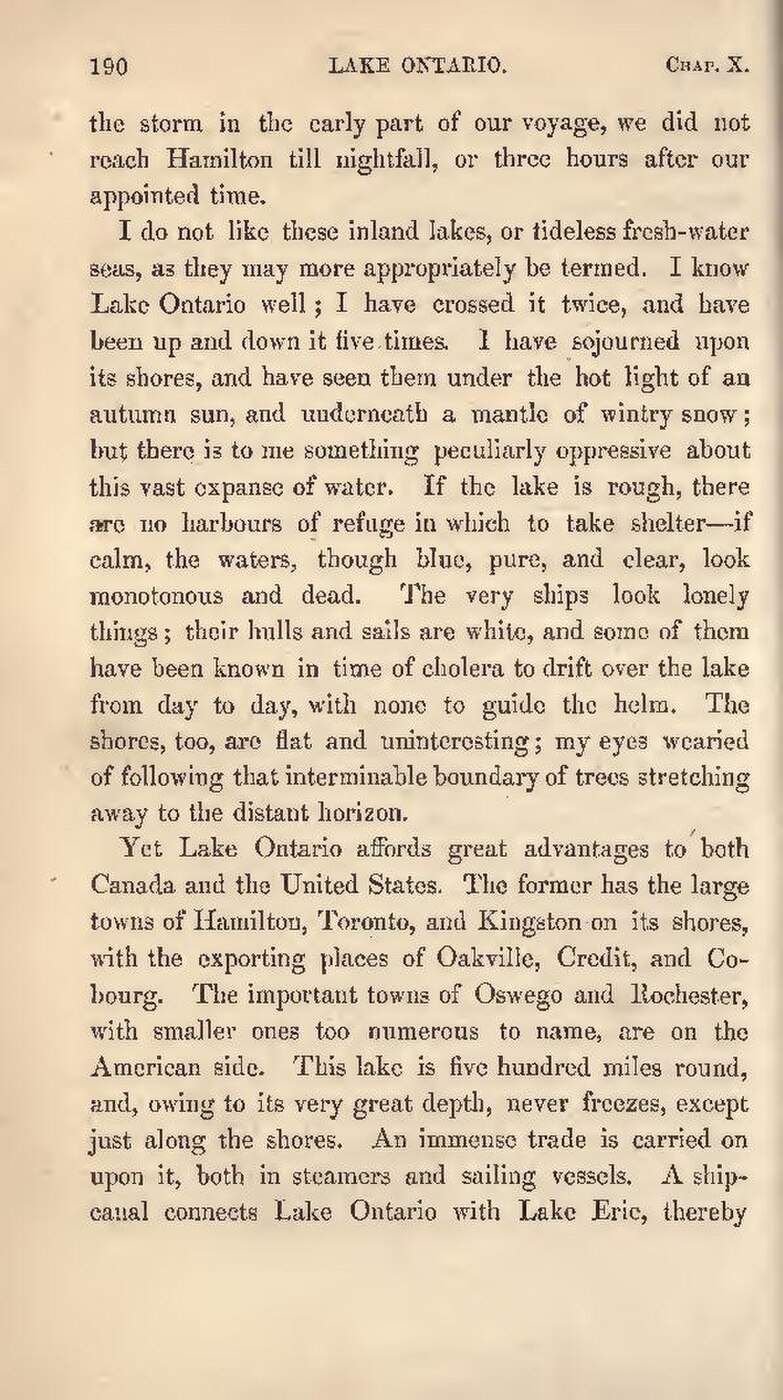the storm in the early part of our voyage, we did not reach Hamilton till nightfall, or three hours after our appointed time.
I do not like these inland lakes, or tideless fresh-water seas, as they may more appropriately be termed. I know Lake Ontario well; I have crossed it twice, and have been up and down it five times. I have sojourned upon its shores, and have seen them under the hot light of an autumn sun, and underneath a mantle of wintry snow; but there is to me something peculiarly oppressive about this vast expanse of water. If the lake is rough, there are no harbours of refuge in which to take shelter—if calm, the waters, though blue, pure, and clear, look monotonous and dead. The very ships look lonely things; their hulls and sails are white, and some of them have been known in time of cholera to drift over the lake from day to day, with none to guide the helm. The shores, too, are flat and uninteresting; my eyes wearied of following that interminable boundary of trees stretching away to the distant horizon.
Yet Lake Ontario affords great advantages to both Canada and the United States. The former has the large towns of Hamilton, Toronto, and Kingston on its shores, with the exporting places of Oakville, Credit, and Cobourg. The important towns of Oswego and Rochester, with smaller ones too numerous to name, are on the American side. This lake is five hundred miles round, and, owing to its very great depth, never freezes, except just along the shores. An immense trade is carried on upon it, both in steamers and sailing vessels. A ship-canal connects Lake Ontario with Lake Erie, thereby
